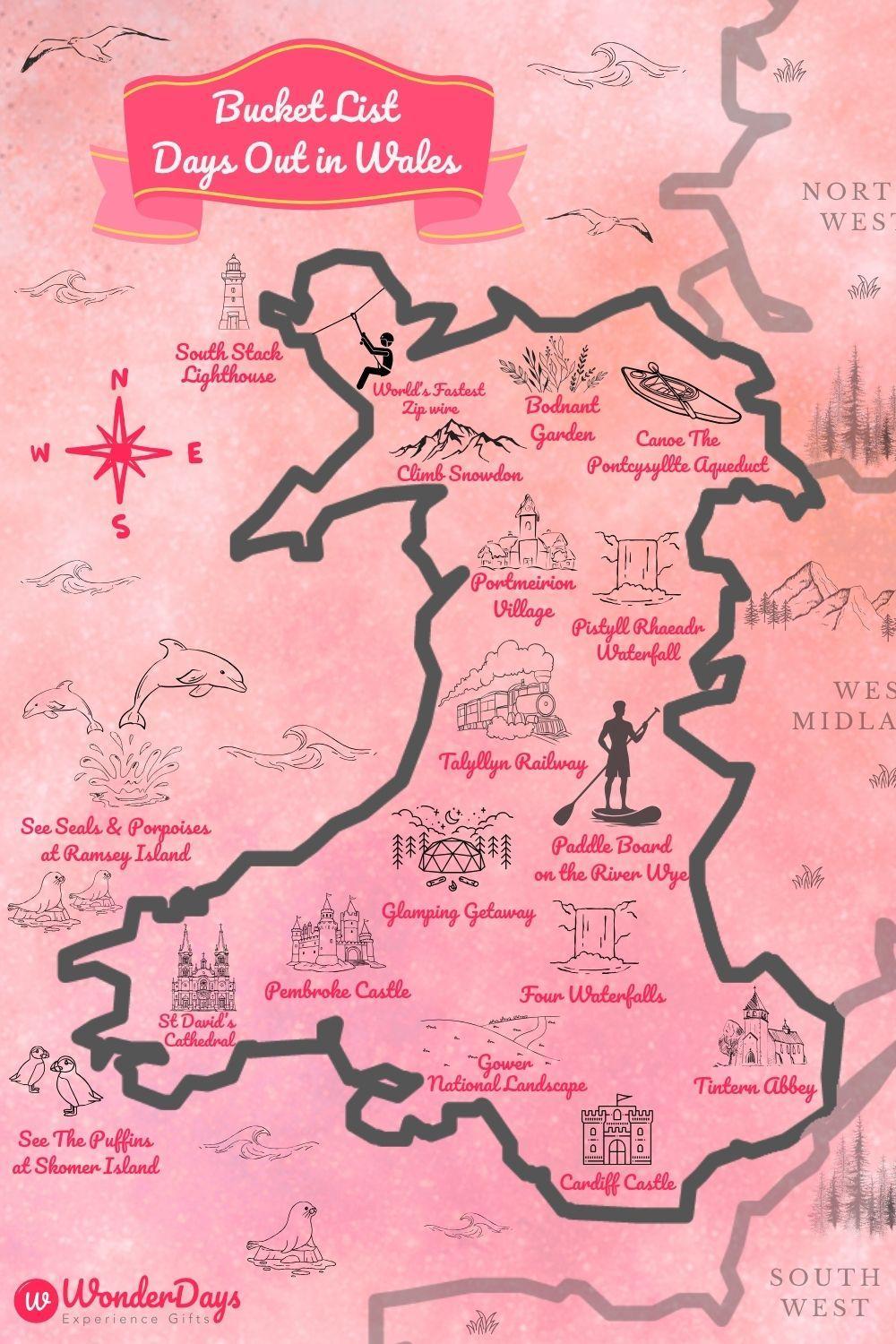
Incredible Things To Do in Wales You’ll Never Forget
Home to the tallest mountain in Wales and the stunning scenery of Snowdonia National Park, North Wales isn’t short of family-friendly things to do. Whether you’re after a fun ...
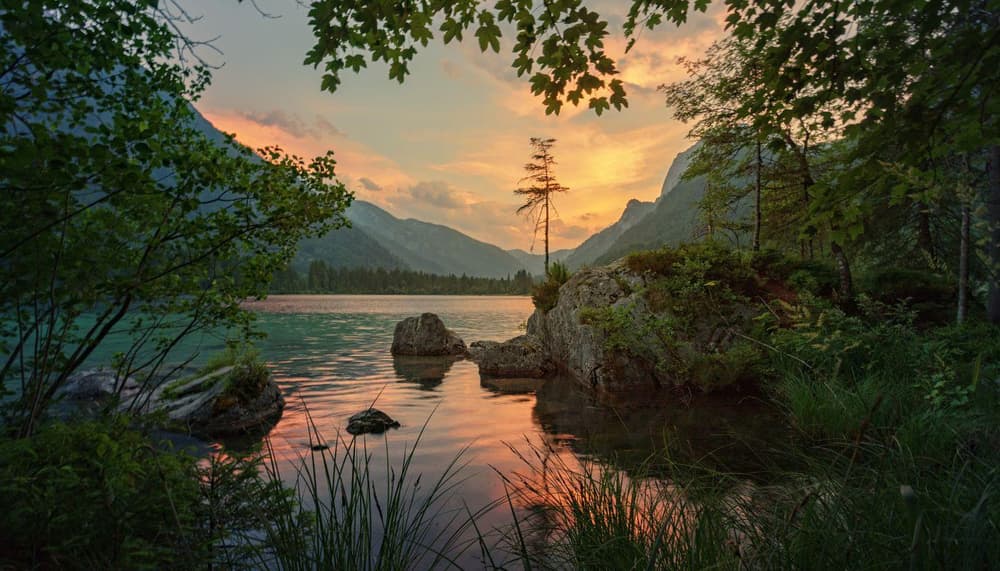
Ever stood in a place of historical significance and wondered what truly happened there? The footsteps of kings, the whispered stories around hearths or the eerie silence after something unexplained? Britain is alive with tales both mythical and real — from ancient stone circles and legendary battlefields to castles said to be haunted by those who never left.
Whether you're drawn to the faerie magic and wonder of Scottish folklore or captivated by the rich tapestry of medieval kingdoms, these enchanting days out across the UK promise more than just history, they invite you into a world of myth, mystery and timeless stories just waiting to be discovered.
From crumbling battlements to windswept moors and sacred stone circles, each location is steeped in stories that blur the line between fact and legend. One thing is certain — you’ll leave with a sense of awe, wrapped in mystery, and touched by the deep, spellbinding spirit of Britain’s long and colourful past.
Step through the gates of Britain’s most famous castles and into a world of kings, queens, betrayals and battles. These towering fortresses aren’t just relics of the past — they’re alive with ghost stories, hidden chambers and centuries of secrets waiting to be uncovered.
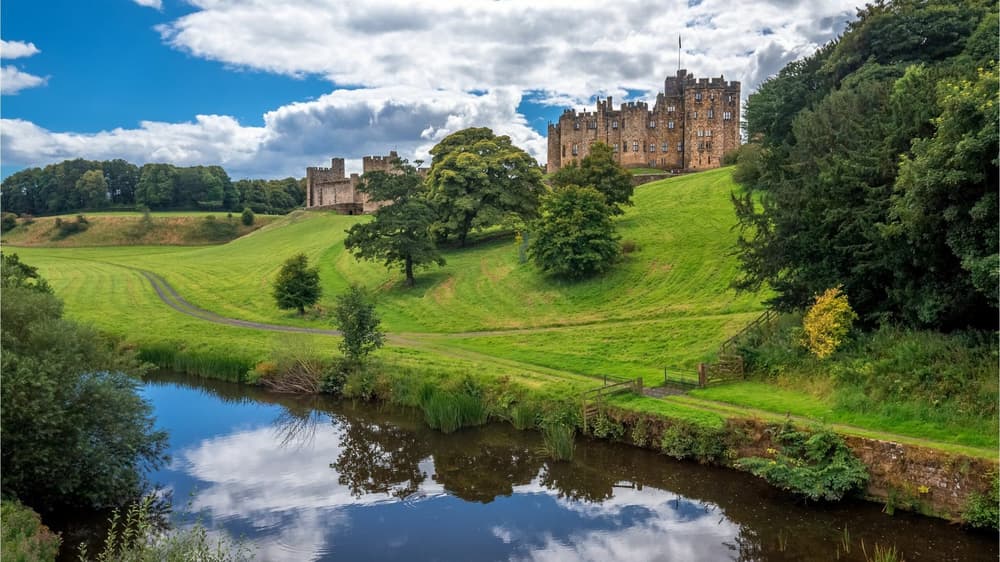
A grand Northumbrian fortress that’s still lived in today, Alnwick Castle merges medieval might with cinematic magic. Step inside this historic castle and find yourself walking the same halls as kings, dukes… and Harry Potter.
Where is it?
Northumberland, England, just south of the Scottish border.
History:
Built in the 11th century and still home to the Duke of Northumberland, Alnwick Castle has been a military outpost, a family home and now a film location for Harry Potter and Downton Abbey.
Myth & Legends:
Alnwick is associated with the tale of the “Alnwick Vampire,” an undead figure said to have plagued the castle in the Middle Ages. The grounds also include a Poison Garden filled with deadly plants and dark stories.
Perched atop a volcanic crag, Stirling Castle is one of the largest and most important castles in Scotland, both strategically and historically. Originally built in the 12th century, its towering walls, grand halls, and panoramic views over the surrounding battlefield plains truly embody the idea of a magnificent fortress.
Where is it?
Stirling, central Scotland, perched on a volcanic outcrop overlooking the River Forth.
History:
Stirling Castle was the childhood home of Mary, Queen of Scots and a key site in Scotland’s royal history. Its strategic position made it the focus of many battles during the Wars of Scottish Independence, including the pivotal Battle of Bannockburn in 1314, where Robert the Bruce secured a major victory against the English.
Myth & Legends:
Ghostly apparitions are said to roam the halls, including the mysterious "Pink Lady," believed to be a noblewoman searching for her lost love, and the "Green Lady," a spectral servant protecting the castle from harm.
Standing high above the Scottish capital, Edinburgh Castle watches silently over the city below. Its walls have seen royal births, brutal sieges, and whispered hauntings that still echo through its ancient stone corridors.
Where is it?
Atop Castle Rock in the heart of Edinburgh, Scotland.
History:
This iconic fortress has dominated the skyline for over 900 years, serving as a royal residence, military stronghold and prison. It was a key site during the Wars of Scottish Independence and home to the Honours of Scotland – the country’s crown jewels.
Myth & Legends:
Haunted by phantom pipers, headless drummers and former prisoners, it's often called one of the most haunted sites in Scotland. Legend says a secret tunnel runs from the castle to the Royal Mile – and the piper sent to explore it was never seen again.
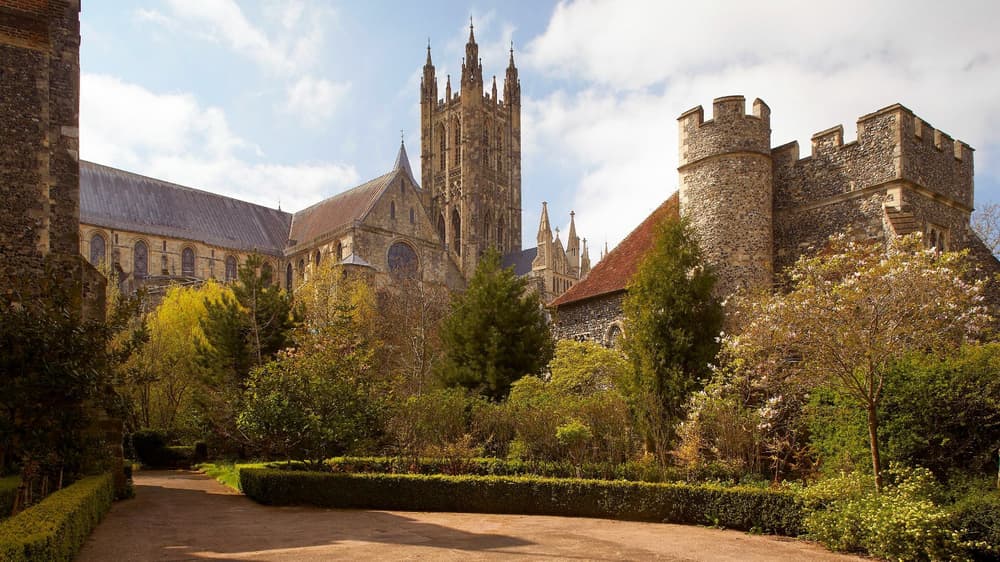
Surrounded by a shimmering moat and set within some of the most picturesque castle grounds in Britain, Leeds Castle feels more like a fairytale than a fortress. Its elegant beauty hides a rich and royal past filled with intrigue, making it one of the best castles to visit in the UK.
Where is it?
Kent, in the south of England, nestled among tranquil parkland and formal gardens.
History:
Often dubbed “the loveliest castle in the world,” Leeds Castle dates back to 1119. It has served as a Norman stronghold, a royal palace for six medieval queens, and even a Tudor retreat for Henry VIII.
Myth & Legends:
A ghostly white lady is said to haunt the Gloriette Tower, often appearing before misfortune strikes. Local legends speak of hidden tunnels beneath the moat and cursed rooms that have long been closed off.
Rising above the River Avon, Warwick Castle is a magnificent medieval castle that brings centuries of history to life. From its blood-soaked dungeons to its lavish halls, every corner tells a story of power and peril.
Where is it?
Warwickshire, in the heart of England’s Midlands.
History:
Originally built by William the Conqueror in 1068, Warwick Castle grew into a mighty medieval fortress and was later transformed into a lavish residence by the Earls of Warwick.
Myth & Legends:
Haunted by Sir Fulke Greville, murdered by his servant, and a ghostly “black dog” said to prowl the grounds. The castle dungeon is notorious for unexplained cold spots and eerie cries.
One of Britain’s most infamous landmarks, the Tower of London is a symbol of royal power, punishment, and paranoia. Its dark past still clings to the walls, and many say its spirits never left.
Where is it?
Central London, on the north bank of the River Thames.
History:
A royal palace, prison, armoury and execution site, the Tower has stood for nearly 1,000 years. It housed famous figures such as Anne Boleyn, Guy Fawkes and the Princes in the Tower.
Myth & Legends:
The most famous ghost is Anne Boleyn, often seen carrying her head. Legend says if the ravens ever leave the Tower, the kingdom will fall.
Perched on Cornwall’s rugged cliffs, Tintagel is a place where history and legend blur. Buffeted by Atlantic winds, it’s long been linked to the myth of a once and future king.
Where is it?
North Cornwall, perched dramatically on the cliffs above the Atlantic.
History:
This medieval ruin stands on a site believed to date back to the Dark Ages. The present castle was built in the 13th century by Richard, Earl of Cornwall, but the headland is long associated with Arthurian legend. Many believe it to be the birthplace of King Arthur, with earlier remains linked to a post-Roman settlement. Here, myth and history are deeply entwined.
Myth & Legends:
Said to be the birthplace of King Arthur, Tintagel is steeped in Arthurian lore. Merlin’s Cave lies beneath the castle, and local tales tell of ancient magic and mystical visions in the sea mists.
Prepare to be amazed and enchanted by Britain’s ancient wonders. This is where the land holds all the power and the line between science and magic ceases to exist. From hidden gems tucked within the surrounding countryside to iconic landmarks steeped in mystery, these sites offer a glimpse into a world where myth and memory intertwine.
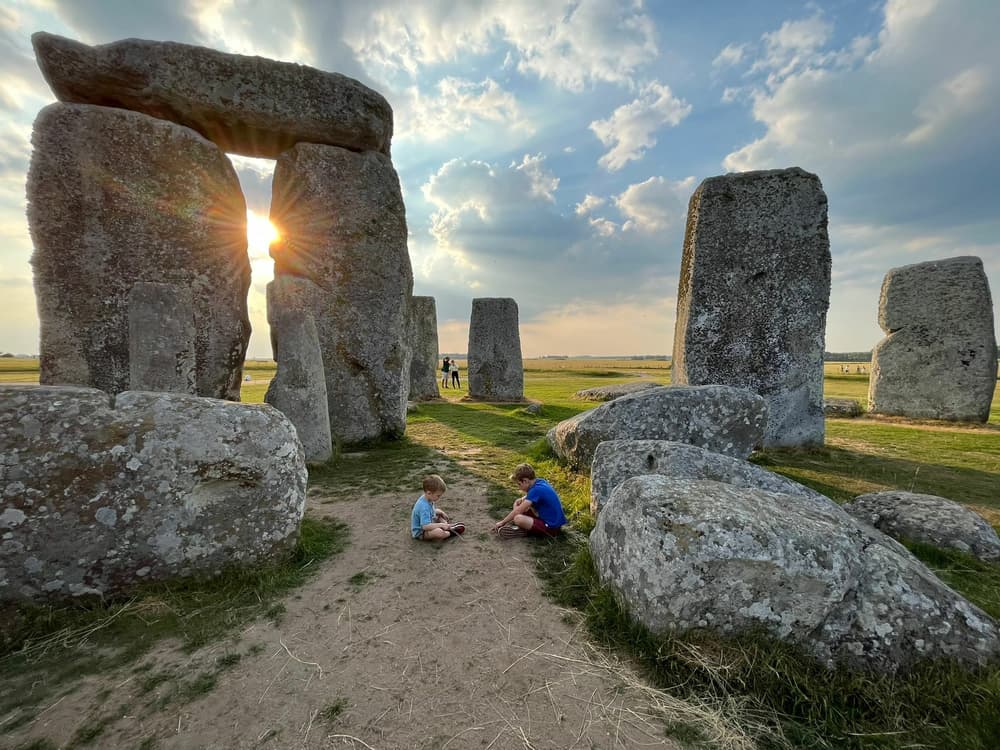
Mysterious and majestic, Stonehenge is one of the most iconic ancient monuments in the world. Its giant standing stones have puzzled historians and inspired spiritual seekers for centuries.
Where is it?
Wiltshire, southern England, on Salisbury Plain.
History:
Believed to have been constructed between 3000 and 2000 BCE, Stonehenge is a prehistoric stone circle aligned with the movements of the sun. Archaeologists believe it was used for ceremonial or astronomical purposes.
Myth & Legends:
Legend claims the wizard Merlin transported the stones from Ireland with magic. Others say giants placed them, and that the stones possess healing powers. It’s still a gathering place for modern-day pagans during solstices.
Set on windswept Bodmin Moor, this trio of ancient stone circles holds an eerie stillness, as if time itself paused here. The Hurlers are among Cornwall’s most atmospheric prehistoric sites.
Where is it?
Bodmin Moor, Cornwall, southwest England.
History:
Dating back to the late Neolithic or early Bronze Age (c. 1500 BCE), The Hurlers are believed to be ceremonial or astronomical in function. Their alignment suggests a deep knowledge of lunar cycles.
Myth & Legends:
Folklore tells of men who were turned to stone for playing hurling on the Sabbath. Nearby formations called “The Pipers” are said to be the musicians who accompanied them, frozen in time as punishment.
Stretching across the rugged landscape of northern England, Hadrian’s Wall is a symbol of the ancient frontier between civilisations. This epic Roman structure once marked the edge of the known world.
Where is it?
From Wallsend near Newcastle to Bowness-on-Solway in Cumbria, northern England.
History:
Built around 122 AD during the reign of Emperor Hadrian, the wall spans 73 miles. It served as a defensive fortification and customs post, housing soldiers and watchtowers to control movement between Roman Britain and the tribes to the north.
Myth & Legends:
Locals once believed the wall was built by giants or ancient kings. Some say Roman spirits still patrol its length, especially near ruined milecastles and forts at dusk.
Once a thriving Roman city, Wroxeter now lies in quiet ruins – a fascinating place where ancient streets and bathhouses whisper of long-lost empire and civilisation.
Where is it?
Near Shrewsbury, Shropshire, in the West Midlands.
History:
Wroxeter was known as Viroconium Cornoviorum and was the fourth largest city in Roman Britain. It flourished in the 2nd century AD with temples, markets, and impressive bath complexes.
Myth & Legends:
Some believe Wroxeter hides buried treasure left by fleeing Romans. Others say Roman soldiers still march at night, heard echoing through the ruins under moonlight.
These chalk-white sea stacks rise from the sea like something from a lost world. With dramatic cliffs, windswept views, and scenic cruises offering breathtaking perspectives from the water, Old Harry Rocks are both a natural wonder and a place steeped in myth.
Where is it?
Isle of Purbeck, near Studland Bay in Dorset, on the Jurassic Coast.
History:
Formed over millions of years by coastal erosion, these chalk formations are part of the Jurassic Coast UNESCO World Heritage Site. They mark the eastern end of the ancient coastline.
Myth & Legends:
Legend claims Old Harry was a notorious pirate who was turned to stone. Others say the Devil (often nicknamed "Old Harry") once slept here. Some tales suggest a giant once used the rocks as a seat to rest between leaps across the channel.
Story, myth or something else entirely? If you’re looking for somewhere with otherworldly magic for your next day trip, these enchanting locations across Britain blur the line between legend and reality. From haunted woods and faerie glens to the stomping grounds of heroes and outlaws, each place holds a tale that still lingers in the air.
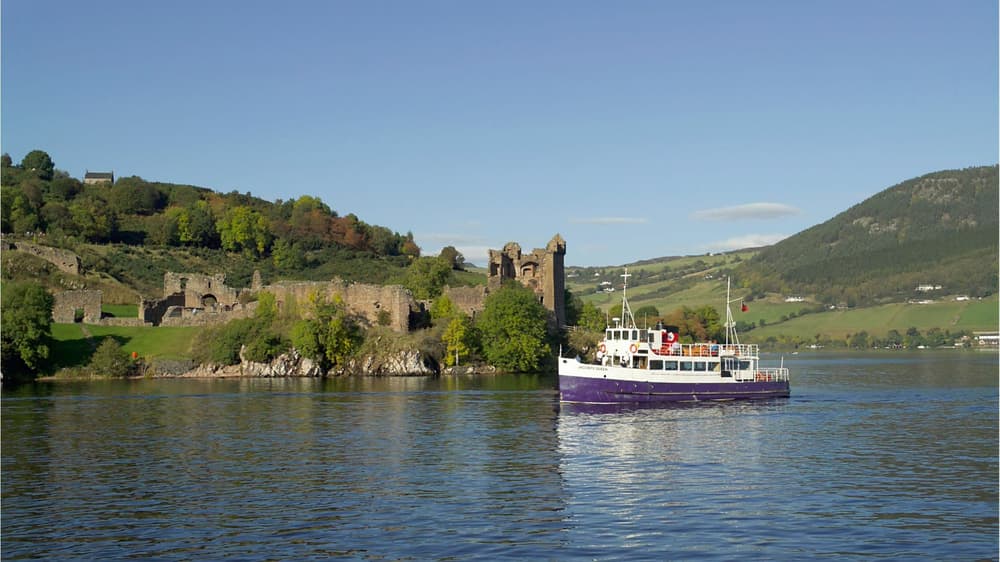
A deep, mysterious loch nestled in the Scottish Highlands, Loch Ness is world-famous not just for its beauty, but for the legend that lurks beneath the surface. Whether you're there for the landscapes or the monster, this is one of Britain’s most iconic mythical locations.
Where is it?
In the Scottish Highlands, near the city of Inverness.
History:
Loch Ness is the second largest Scottish loch by surface area, formed by glaciers during the last Ice Age. The loch has been an important part of Highland life for centuries, with Urquhart Castle on its shores serving as a medieval stronghold.
Myth & Legends:
The Loch Ness Monster, or “Nessie,” was first reportedly spotted in 565 AD by Saint Columba. Sightings have continued for centuries, making Nessie one of the most famous cryptids in the world. Whether hoax, shadow or creature, the legend endures.
Rolling green hills and ancient woodlands make the Chilterns a peaceful escape — but folklore suggests something a little more magical beneath the surface. With scenic views and nostalgic charm, it’s also the perfect place for a steam train ride through the countryside.
Where is it?
Stretching through Oxfordshire, Buckinghamshire, Hertfordshire and Bedfordshire in southern England.
History:
Designated an Area of Outstanding Natural Beauty, the Chilterns have been settled since prehistoric times. The hills are home to Iron Age hillforts, ancient trackways and chalk escarpments.
Myth & Legends:
Local folklore speaks of faerie rings in the woods and strange lights dancing over the hills. There are whispers of old fae paths that pass through beech groves, and it’s said that time behaves strangely in some of the more secluded glades.
Beneath the trees of Cannock Chase lies one of Britain’s most active paranormal hotspots. Visitors report eerie sightings and an unsettling feeling that something is watching.
Where is it?
Staffordshire, West Midlands.
History:
A designated Area of Outstanding Natural Beauty, Cannock Chase was used during both the First World War and the Second World War as a training camp. It also contains ancient burial mounds dating back to the Bronze Age.
Myth & Legends:
Home to legends of the Black Eyed Children, phantom soldiers, and even werewolves, Cannock Chase has become a magnet for paranormal enthusiasts. The tales are so frequent that it’s considered one of the UK’s most haunted natural areas.
This legendary woodland is inseparable from the story of England’s most famous outlaw. Whether myth or man, Robin Hood’s spirit is said to still linger beneath the ancient oaks.
Where is it?
Nottinghamshire, East Midlands.
History:
Once a royal hunting forest, Sherwood spans over 1,000 acres and includes trees over 1,000 years old, such as the Major Oak — said to be Robin Hood’s hideout.
Myth & Legends:
The legendary home of Robin Hood and his band of Merry Men, Sherwood is a landscape of rebellion and justice. Though historians debate Robin’s existence, the stories have lived on for centuries through ballads, books and film.

Wild, remote, and teeming with birdlife, Skomer is a Celtic “thin place” — where the veil between worlds is said to be especially fragile. A Skomer Island boat tour is a magical way to experience its rugged beauty and spot puffins, seals, and other incredible wildlife up close.
Where is it?
Off the coast of Pembrokeshire, West Wales.
History:
Skomer has evidence of ancient settlement, including Iron Age stone circles and hut ruins. It’s now a nature reserve famous for puffins and other seabirds.
Myth & Legends:
Welsh folklore considers offshore islands like Skomer to be thin places where the human and spirit worlds touch. Some stories claim druids once used the island for sacred rituals.
Sacred and rugged, Ramsey Island is wrapped in folklore and known for its spiritual significance. A boat tour offers a unique way to explore its dramatic coastline, spot Atlantic grey seals, and feel the powerful energy that has long surrounded this mystical Welsh island.
Where is it?
Just off the coast of St Davids, Pembrokeshire, West Wales.
History:
Named after Saint Ramsey, the island has early Christian connections and remains unspoilt. It’s a Site of Special Scientific Interest (SSSI) and home to seals, choughs and seabirds.
Myth & Legends:
Ramsey is believed to be a place of ancient pilgrimage. Local legends tell of healing waters, ghostly monks and a stone circle that appears only under moonlight — linking the island to older, pre-Christian beliefs.
A stunning Gothic ruin steeped in mystery, Melrose Abbey blends the sacred and the strange, with stories that stretch beyond the grave.
Where is it?
Scottish Borders, near the town of Melrose.
History:
Founded in 1136 by Cistercian monks under the order of King David I of Scotland. The abbey became a place of pilgrimage and royal connection — the heart of Robert the Bruce is believed to be buried here.
Myth & Legends:
Monks and visitors report strange lights and ghostly music. The burial of Robert the Bruce’s heart adds a layer of legend, suggesting that his spirit still watches over the abbey.
Britain is renowned for its beautiful countryside, ancient woodlands and Areas of Outstanding Natural Beauty. But beneath that lies a rich history of myth and history, where landscapes whisper stories of ancient battles, ghostly wanderers, and sacred ground.
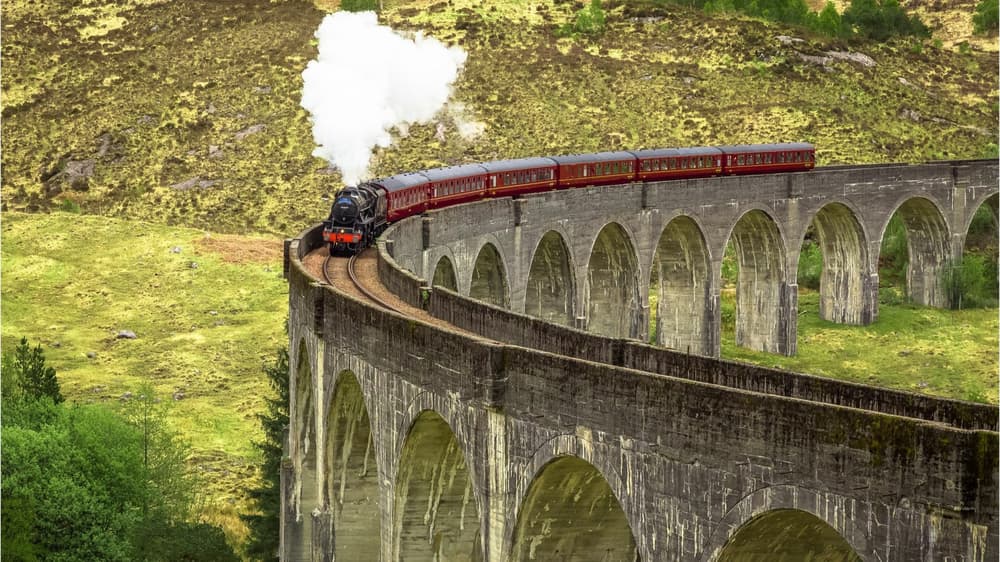
Sweeping across the Scottish Highlands, the Glenfinnan Viaduct is as cinematic as it is enchanting. It’s a place where engineering meets enchantment — and where the past feels very much alive.
Where is it?
Glenfinnan, near Fort William, West Highlands of Scotland.
History:
Completed in 1901, the viaduct carries the West Highland Railway and stands as an architectural feat amidst wild terrain.
Myth & Legends:
The area is linked to the Jacobite uprisings, and the spirit of Bonnie Prince Charlie is said to linger in the glen. The viaduct famously appears in the Harry Potter films, adding to its magical aura.
Bonus Tip:
Ride the Jacobite Steam Train — the real-life “Hogwarts Express” — for an unforgettable journey through Scotland’s spellbinding landscapes.
Rising through the heart of Snowdonia, Yr Wyddfa is the highest mountain in Wales and a place steeped in magic. Whether you hike the trails or take the heritage railway, you're treading paths that echo with ancient legend.
Where is it?
Snowdonia National Park, North Wales.
History:
An iconic peak for centuries, Yr Wyddfa has long been a spiritual site and a landmark for travellers. It’s part of a wider national park rich in Welsh history and tradition.
Myth & Legends:
According to legend, the mountain is the burial place of Rhitta Gawr, a giant defeated by King Arthur. Some say you can still feel the presence of the giant sleeping beneath the summit.
With its wild moorlands, limestone dales, and ancient trails, the Peak District is a land shaped by time and story. It’s Britain’s first national park — and one that hides centuries of history in its hills.
Where is it?
Spanning Derbyshire, Cheshire, Greater Manchester, Staffordshire, and South Yorkshire.
History:
Designated as the UK’s first national park in 1951, the Peak District has been inhabited since prehistoric times and dotted with Bronze Age stone circles and medieval villages.
Myth & Legends:
Legends tell of ghostly horsemen riding through the mist and haunted ruins such as the Nine Ladies Stone Circle, believed to be petrified dancers cursed by ancient forces.
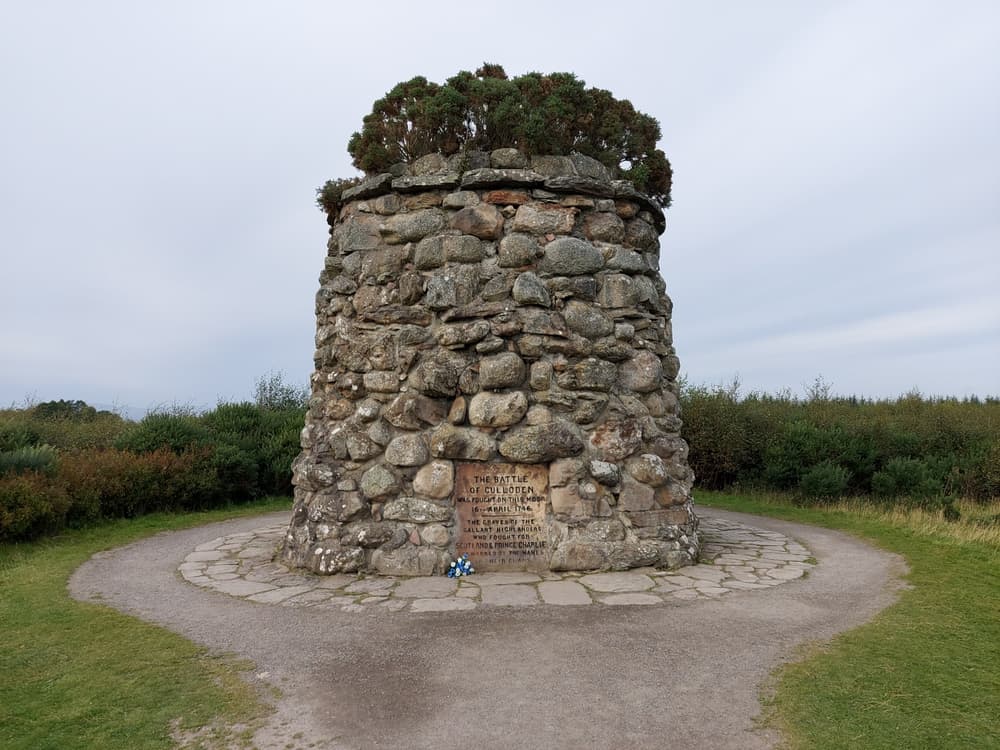
Windswept and solemn, Culloden Moor is the site of one of Scotland’s most defining and tragic battles. The land still carries the weight of the Jacobite cause and whispers of the fallen. A visit to Culloden Moor offers a powerful and moving experience, where history feels heartbreakingly close.
Where is it?
Near Inverness, in the Scottish Highlands.
History:
On 16 April 1746, the Jacobite forces of Charles Edward Stuart were defeated by government troops, ending the Jacobite rising and altering the course of Scottish history.
Myth & Legends:
Visitors report hearing battle cries and phantom footsteps across the moor. It’s said that on the anniversary of the battle, ghostly figures can be seen standing among the memorial stones.
A shimmering jewel among Scotland’s landscapes, Loch Lomond’s vast waters and wooded shores have inspired poets and mystics alike. Today, it’s also a hub for water-based adventures.
Where is it?
Loch Lomond & The Trossachs National Park, West Scotland.
History:
The loch has been a natural boundary and cultural icon for centuries, featuring in Scottish song and folklore. It's one of the largest freshwater lakes in Britain.
Myth & Legends:
Stories tell of water spirits and faeries living beneath the surface. Some say the loch is home to a kelpie — a shapeshifting creature that lures travellers into the water.
Bonus Tip:
Kayaking, paddleboarding, and boat tours are popular ways to explore the loch and take in its mystical scenery.
England’s largest natural lake, Lake Windermere is a serene stretch of water surrounded by fells, forests, and timeless charm. It’s a landscape that feels both peaceful and powerful.
Where is it?
Lake District National Park, Cumbria, North West England.
History:
A source of inspiration for Romantic poets like Wordsworth and artists throughout the centuries, Windermere has been a beloved destination since the 19th century.
Myth & Legends:
Folklore speaks of a mysterious creature known as “Bownessie” said to live in the lake’s depths. Locals and visitors have long claimed sightings of something stirring beneath the surface.
With beautiful gardens, grand state rooms and centuries of history, these royal palaces, stately homes and universities offer a glimpse into Britain’s rich past. From royal stories to academic achievements, each one has played a key role in shaping the nation.
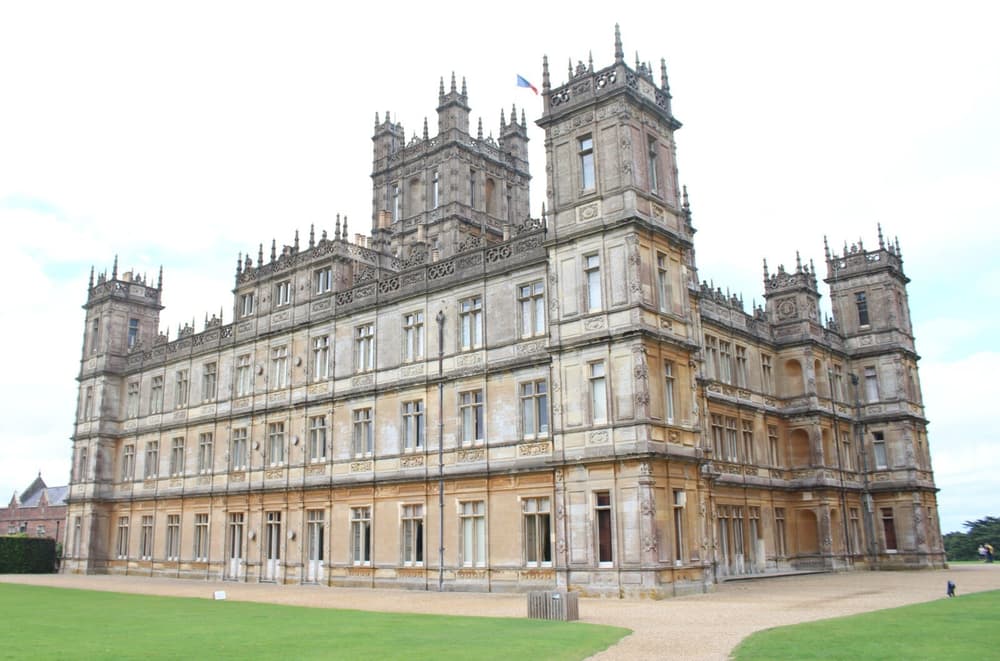
Best known today as the setting of Downton Abbey, Highclere Castle has a much deeper history — one that weaves together nobility, archaeology and royalty.
Where is it?
Hampshire, South East England, near Newbury.
History:
Highclere Castle was rebuilt in its current form in the 19th century, though the estate dates back to the medieval period. It’s the ancestral home of the Earls of Carnarvon, one of whom financed the discovery of Tutankhamun’s tomb in 1922.
Myth & Legends:
There are whispers of ancient curses tied to the Egyptian artefacts kept on-site. The castle's grand library and great hall are also said to be visited by spectral figures from its aristocratic past.
A city of spires, scholars and secrets, Cambridge has been home to some of the world’s greatest thinkers for over 800 years. Its historic colleges and atmospheric courtyards are brimming with stories both academic and mysterious.
Where is it?
Cambridge, Cambridgeshire, in the East of England.
History:
Founded in 1209, Cambridge University is one of the oldest and most prestigious institutions in the world. Its colleges have educated monarchs, scientists and poets alike, and its traditions date back to the medieval period.
Myth & Legends:
Some say the university library is haunted by scholars who never left, and the Mathematical Bridge was once believed to be built without bolts — a legend debunked, but often retold.
A masterpiece of English Baroque architecture, Blenheim Palace is more than a grand home — it’s a symbol of triumph, lineage and legacy.
Where is it?
Woodstock, Oxfordshire, on the edge of the Cotswolds.
History:
Built in the early 18th century as a gift to John Churchill, 1st Duke of Marlborough, following his victory at the Battle of Blenheim. It’s the birthplace of Sir Winston Churchill and remains the seat of the Dukes of Marlborough. The estate's grandeur reflects a time of power and prestige.
Myth & Legends:
There are rumours of a secret tunnel under the palace, and the shadowy figure of a former servant is said to roam the Great Hall.
Steeped in royal drama and political intrigue, the Palace of Holyroodhouse has witnessed some of Scotland’s most turbulent chapters.
Where is it?
At the end of Edinburgh’s Royal Mile, in the heart of Scotland’s capital.
History:
The official Scottish residence of the monarch, the palace has been a royal dwelling since the 16th century. It was the home of Queen Mary of Scots and hosted many members of the royal family over the centuries. Today, it remains a working royal palace and is closely associated with King Charles iii.
Myth & Legends:
The ghost of David Rizzio, Queen Mary’s murdered secretary, is said to haunt the Queen’s apartments. Visitors claim to hear footsteps echoing in empty corridors and to feel sudden chills where he met his end.
So whether you’re looking to explore some of the best castles in England or dip your toe into the legends and mysteries that still linger across the landscape, these magical places offer more than just a day out — they invite you into the stories of the past. And if you’re stuck on what to get someone who loves a good story from the past, these unique days out make brilliant gifts for history lovers and anyone who’s into myths, legends or a bit of mystery.

Home to the tallest mountain in Wales and the stunning scenery of Snowdonia National Park, North Wales isn’t short of family-friendly things to do. Whether you’re after a fun ...

Knit jumpers, hot chocolates, and the soft patter of rain against the window, there’s something undeniably comforting about a rainy day. But when the drizzle turns from dreamy...

In a world of instant notifications, next-day delivery and the rising cost of just about everything, it’s no wonder everyday life can feel overwhelming. The constant rush, the...
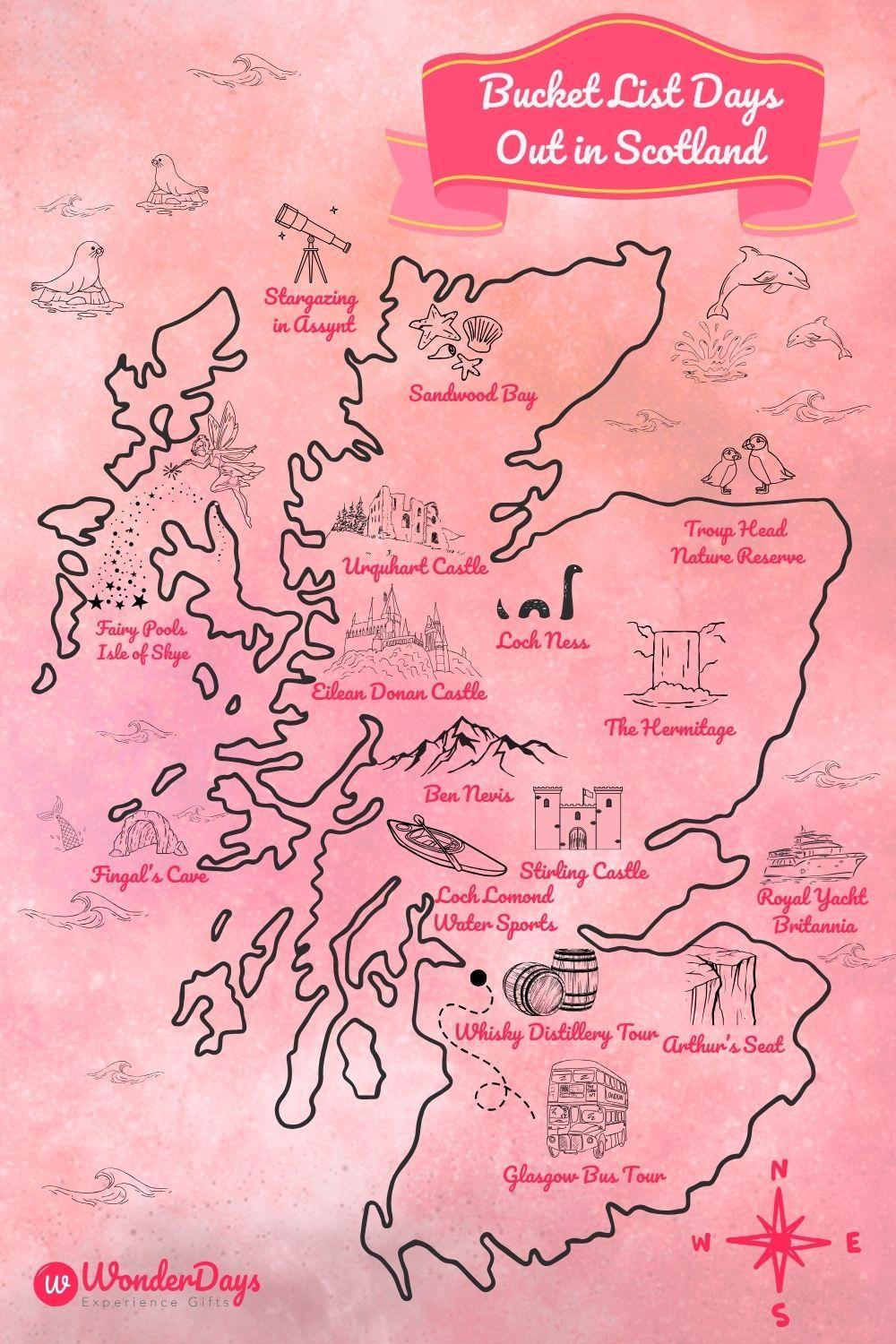
From the rugged landscapes and mystical beauty of the highlands to the haunting histories that are woven through Edinburghs cobbled streets, Scotland is a country with magic a...
Why our customers love us
Change to an experience that suits your current mood
eVouchers are sent directly to your email inbox within seconds
Watch this quick overview of exchanging your WonderDays voucher.
Sign up to be the first to hear about fantastic offers, exclusive newsletter-only discounts & competitions. Exclusions apply.